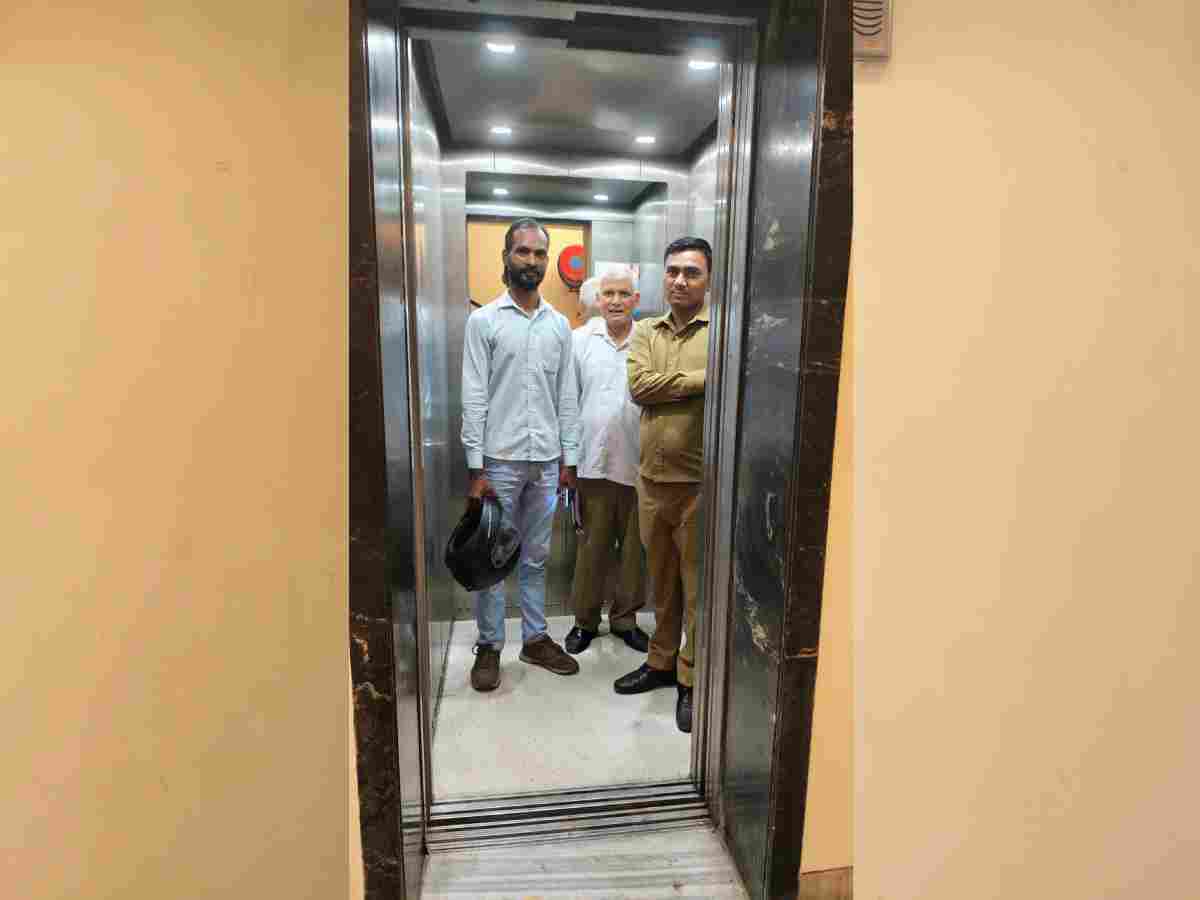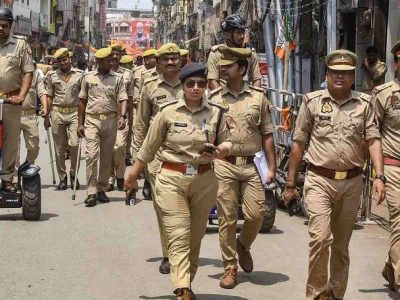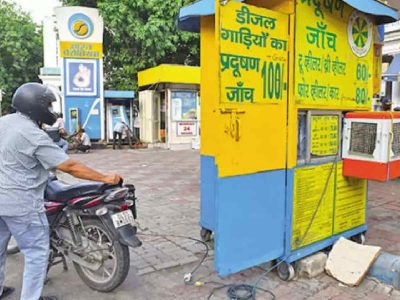It’s 7 PM. At Nehru Place Metro Station, people rush in from all directions. The urgency is visible in every stride. A light drizzle begins, but Gore Lal, just off his shift, steps out from a nearby building and walks calmly into the rain.
He is in no hurry. After ten hours inside a lift, Gore Lal craves the open sky. He wants to feel the rain on his skin. His desire is understandable—for the past ten hours, he has been inside a metal box, going up and down without pause.
Gore Lal works as a lift operator. One moment he’s taking people up, the next, bringing them down. During his ten-hour shift, he gets only a 30-minute lunch break. That is his routine—unchanging, day after day. Sometimes he has a small stool to sit on inside the lift; sometimes he doesn’t.
But this life isn’t unique to Gore Lal. Across the hundreds of high-rise buildings in Delhi and the NCR, there are countless “Gore Lals”—their names differ, but their lives are identical. The lift is their office. They have no colleagues to chat with, no change of scenery. Their entire duty is confined to a small metal room. For a 10- to 11-hour shift in what often feels like a dark cell, they earn between Rs 15,000 and Rs 16,000 a month.
Throughout his shift, Gore Lal repeats the same set of announcements: “Fifth floor, getting out?”, “Third floor has arrived…”, “No, the lift is going up now…”, “Now it’s going down.” He explains that he must do this because “some people can’t be bothered to look at the lift’s indicator lights”.
He also observes the behaviour of regulars. “There are many people in the building who spend time buttering up the boss, feeding him office secrets. But the moment the boss isn’t with them in the lift, they are busy pointing out his flaws,” he says.
Gore Lal first came to Delhi from Gorakhpur in 2008, when he was 21 years old. His maternal uncle, already living in the city, helped him get this job. He has held the same post ever since. Now married, he has brought his wife to Delhi. She works as a cook for a family in Amar Colony, Lajpat Nagar. The same family has provided them with a single room in their home, where the couple lives with their daughter.
As he leaves, Gore Lal offers a quick farewell. “Now I am going. My wife and daughter would be waiting for me,” he says, walking briskly into the evening.
The silent gears of urban life
In Delhi and the NCR—regions of constant vertical growth—lift operators are essential to everyday life. Whether in residential complexes, commercial offices, or malls, they ensure the smooth movement of thousands. Yet their lives often go unnoticed.
Raju, a 48-year-old lift man working in a high-rise at Rajendra Place, begins his day at 6 AM. He lives in a modest one-room dwelling in a nearby slum and navigates the city’s chaotic traffic on a bicycle to reach work. His faded blue shirt and trousers form his uniform—a quiet badge of duty.
For twelve hours a day, six days a week, Raju operates the building’s elevator. His small cabin, a five-by-five-foot box, is both his workplace and, at times, his only refuge. The job demands immense patience. While he greets everyone with a polite nod, many don’t acknowledge his presence. Children often press buttons playfully. Some passengers vent their frustrations over delays. Still, he stays calm.
“It’s part of the job,” he says with quiet acceptance. Brief lunchtime chats with security guards offer his only social interaction. They share similar lives—long hours, little pay. Earning around Rs 14,000 a month, Raju supports his wife and two children and tries to save for their education, even as costs rise.
Also Read: Delhi demolitions: Thousands left homeless despite court stays and housing promises
Delhi’s summers test his endurance. The lift often becomes a stifling metal box, poorly ventilated and unbearably hot. Yet Raju ensures it runs smoothly, regularly checking for faults and reporting issues. During power cuts—common in older buildings—he must crank the lift manually, a physically gruelling task. Winters bring some relief, but foggy mornings require early starts to help residents move safely.
Lift operators like Gore Lal and Raju are privy to fragments of many lives—arguments, celebrations, hurried phone calls—yet they remain invisible observers. Despite the challenges, Raju finds pride in his role. “I keep the building moving,” he says.
His dream is simple: a better future for his children. In the unrelenting pace of city life, lift men like Raju and Gore Lal are the silent gears that keep Delhi going—their stories, a quiet testament to resilience, dignity, and hope.





